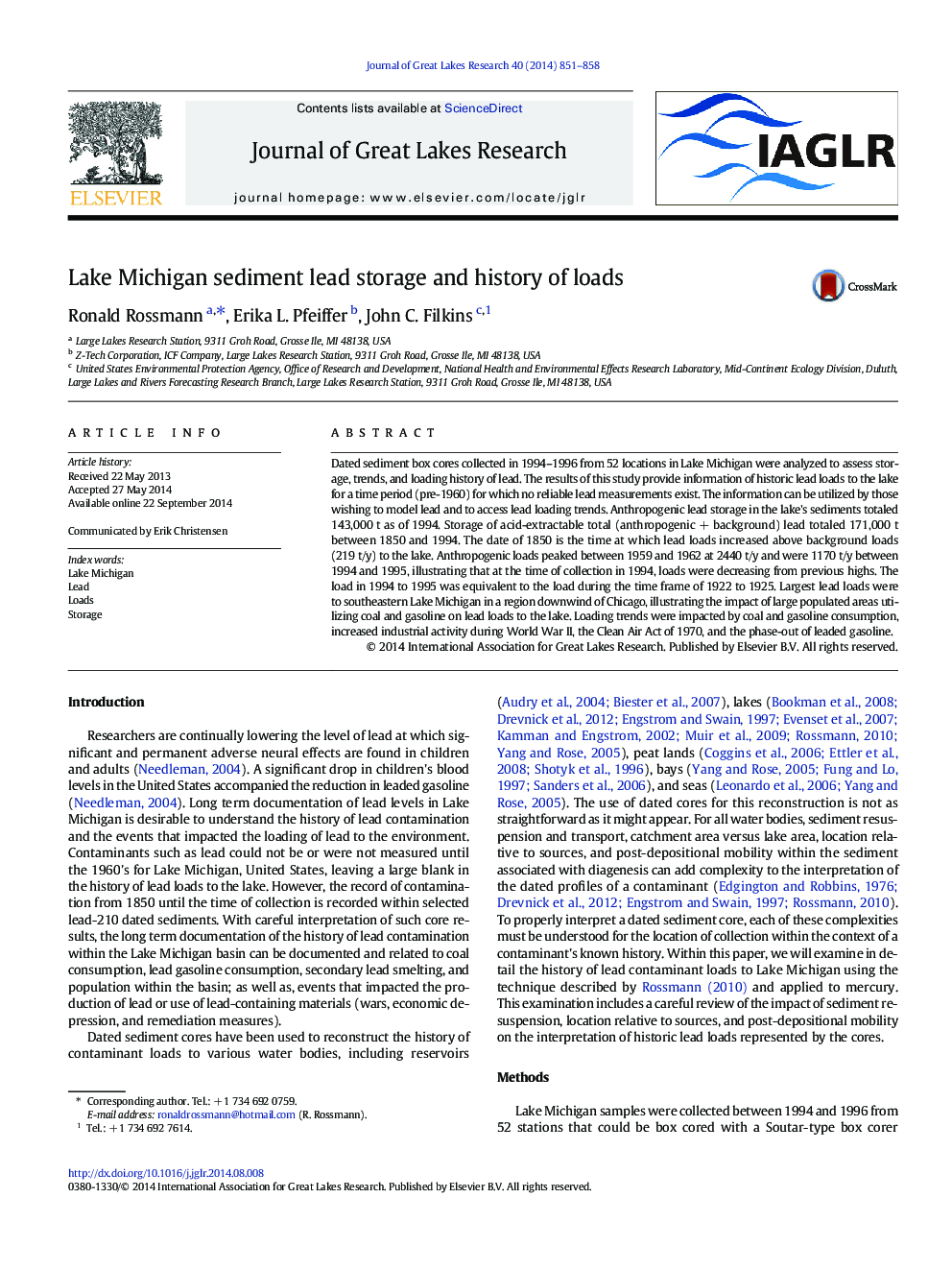| Article ID | Journal | Published Year | Pages | File Type |
|---|---|---|---|---|
| 6305066 | Journal of Great Lakes Research | 2014 | 8 Pages |
Abstract
Dated sediment box cores collected in 1994-1996 from 52 locations in Lake Michigan were analyzed to assess storage, trends, and loading history of lead. The results of this study provide information of historic lead loads to the lake for a time period (pre-1960) for which no reliable lead measurements exist. The information can be utilized by those wishing to model lead and to access lead loading trends. Anthropogenic lead storage in the lake's sediments totaled 143,000 t as of 1994. Storage of acid-extractable total (anthropogenic + background) lead totaled 171,000 t between 1850 and 1994. The date of 1850 is the time at which lead loads increased above background loads (219 t/y) to the lake. Anthropogenic loads peaked between 1959 and 1962 at 2440 t/y and were 1170 t/y between 1994 and 1995, illustrating that at the time of collection in 1994, loads were decreasing from previous highs. The load in 1994 to 1995 was equivalent to the load during the time frame of 1922 to 1925. Largest lead loads were to southeastern Lake Michigan in a region downwind of Chicago, illustrating the impact of large populated areas utilizing coal and gasoline on lead loads to the lake. Loading trends were impacted by coal and gasoline consumption, increased industrial activity during World War II, the Clean Air Act of 1970, and the phase-out of leaded gasoline.
Keywords
Related Topics
Physical Sciences and Engineering
Earth and Planetary Sciences
Earth and Planetary Sciences (General)
Authors
Ronald Rossmann, Erika L. Pfeiffer, John C. Filkins,
